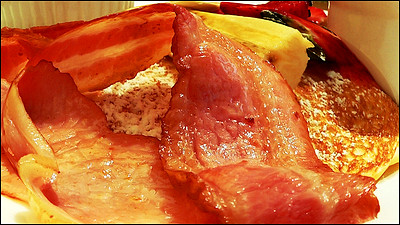Will fully automated cooking robots rob humans of their jobs?

Advances in mechanical engineering have led to the development of robots that automatically cook food and are actually being introduced to some fast food chain stores. The Worth Street Journal, an overseas newspaper, explains how such robots can reduce the burden on the site and whether they will take away human work.
Amid the Labor Shortage, Robots Step in to Make the French Fries --WSJ
According to the US Department of Labor, as of June 2021, the number of jobs in the accommodation and food service industry has doubled from 2020 to more than 1.5 million . Many food service industries are plagued by shortages of staff and wage inflation, and are working to automate customer service, online ordering, and food production itself.
Fast food restaurants such as White Castle are also one of the companies working on automating food production. It is trying to automate the cooking of food that is basically done by human hands using the robot 'Flippy ' developed by Miso Robotics, and it is actually introduced at White Castle 42nd store in Indiana. That thing.
Flippy is an arm-type robot covered with a white oil-resistant cloth. You can move along the rails mounted overhead to flip the hamburger patties, or pull the basket of french fries out of the oil. You can see how Flippy is actually working in the video below. White Castle plans to work with Miso Robotics to improve Flippy and expand it to 10 new stores.
Flippy the Burger Flipping Robot at CaliBurger Pasadena --YouTube
One of the biggest challenges engineers face in food processing automation is handling complexity. Handling raw foods has issues such as hygiene standards and storage / cooking temperatures, and it is extremely difficult to develop machines that solve these issues. Robot development startups surveyed by The Wall Street Journal said that the main solution was to use machines like Flippy that only partly cook.
'The real challenge is how to make a machine that handles food whose properties change with cooking,' said Bernie Rag, CEO of robot development startup Karakuri. The cooking robot ' DK-One ' developed by the company can automatically cook yogurt parfait, green salad, etc. until the ingredients are selected and cooked.

'We focus on robots being cheaper than humans in terms of operating costs per hour,' said Ofel Zinger, co-founder of robotics developer Kitchen Robotics. The cooking robot ' Beastro ' developed by the company can be rented for $ 7,500 (about 830,000 yen) per month including maintenance costs, and it is said that one machine can do the work for 2 to 3 people. Besides these, cooking robots are being developed by various companies.
For companies looking to deploy more robots, the potential benefits are not only cost savings, but also consistency and reliability. Ruth Cowan , a researcher on kitchen automation, said, 'Even low-wage workers have to come to work.' 'The desire to replace unreliable people with more reliable machines has been around for over 100 years. It has been a driving force for the adoption of automation over the years. ' The impetus for this is that wages are relatively low, and as the popularity of the food service industry, which is physically and mentally burdensome, declines, it is becoming stronger and stronger.
While automation always provides high efficiency, Cowan's research also shows that 'at the same time as the labor required for cooking is reduced, the level of quality and product diversity that consumers expect is also increased.' .. In other words, robots that are supposed to save time and money are eventually used to get the attention of consumers. As a result, Cowan predicts that the amount of human resources needed will not change after all.
Related Posts:
in Posted by log1p_kr







